by Christian Artuso
Dr. Christian Artuso is the Manitoba Program Manager of Bird Studies Canada. He is an ornithologist, wildlife photographer and birder. He has a special interest in owls and his thesis was on the Eastern Screech Owl. He is so passionate about owls that he happily and willingly spent the night at the Angono Petroglyphs to get better views of the Philippine Eagle owl. In this article he also shares tips on finding and photographing birds at night.
It was an incredible stroke of luck to meet several members of the Philippine birding community online through the Owls of the World Facebook page that I started. When I decided to make my second visit to the Philippines looking for endemic owl species, I got in touch with Tonji Ramos, who planned an incredible itinerary to hit the key sites for our target endemic owls. The result was a whirlwind tour of Negros, Cebu, Camiguin, and Tablas with a short stay on Mindanao, where we scored big with the highly sought-after Mindanao Scops Owl putting on a great show. While traveling with Tonji and Sylvia, we were joined by different people on each leg and everyone shared their local knowledge and contacts to streamline the logistics. The best part was seeing the close knit Filipino community working together and sharing their resources for everyone’s benefit. I am used to owling on my own but I greatly enjoyed owling in a group of 5 or 6 people. I felt very privileged to be a part of this trip and overjoyed to see 12 owl species of which 6 were lifers. I was especially impressed with Tonji’s exceptional planning and preparations that made this possible.
After a resounding success on the smaller islands I still had two target owls on Luzon, viz Australasian Grass Owl and Philippine Eagle-Owl. After getting flight views of the former, I was determined to get a good look at Philippine Eagle-Owl for a complete sweep of all my trip targets. The news on nesting pairs in metro Manila had broken just as I was leaving the Philippines on my last trip so I never got to partake of the easy viewing that so many enjoyed. Tonji suggested that Angono would be the best site to try since a pair with their offspring were still in the area, even though they had not been seen roosting near the museum in several months. Of course I was concerned that the owls may have left the area if their young one had achieved independence. With some help from Irene Dy, Tonji called ahead to get permission for a nocturnal visit to look for the owls. Although we waited for several hours in the darkness, all we had was the briefest views of a large owl flying down towards the golf course and a few distant calls. The good news was that the friendly security guard reported hearing them often. The only thing for it was to go back for a longer visit and an overnight search. Some readers may be surprised that I was willing to spend a whole night at the petroglyphs but such is the allure of the mighty Philippine Eagle-Owl, a particularly charismatic species that, before the nests in Metro Manila were discovered, was arguably one of the hardest owls to find in the region.
For my second attempt, the planned Angono all-nighter, I arrived after 4 pm and climbed the stairs up to the top of the cliffs and walked around until I found a good vantage point to assess the available habitat. I was very surprised how dry the site was, unlike the moist forest I have experienced in most parts of the Philippines. Drawing on my experience as an owl researcher, I picked out the areas that I thought would be best for a roosting eagle-owl based on microclimate and potential for a good hiding place. The forest was best beneath a steep cliff that arched around from the petroglyph site, with some tiny ravines shaded by larger trees. Since there were no real trails, I had to bushwhack down the steep slope to the areas I had chosen and walk a search grid, taking great care to check the ground for the poisonous snakes. All of that took some time of course but, as luck would have it, I spotted a roosting eagle-owl around 6 pm. I took the best photos I could in the dimming light and stayed motionless waiting for the owl to get active. The owl was obviously well aware of my presence and noticeably nervous even though it did not fly away. Many people believe that an owl that doesn’t fly away is “comfortable” with human onlookers but nothing could be further from the truth. Subtle cues, such as erect rictal bristles and posture are more revealing of the owl’s comfort level. I wondered in fact if the owl’s reluctance to move indicated that there was young nearby.
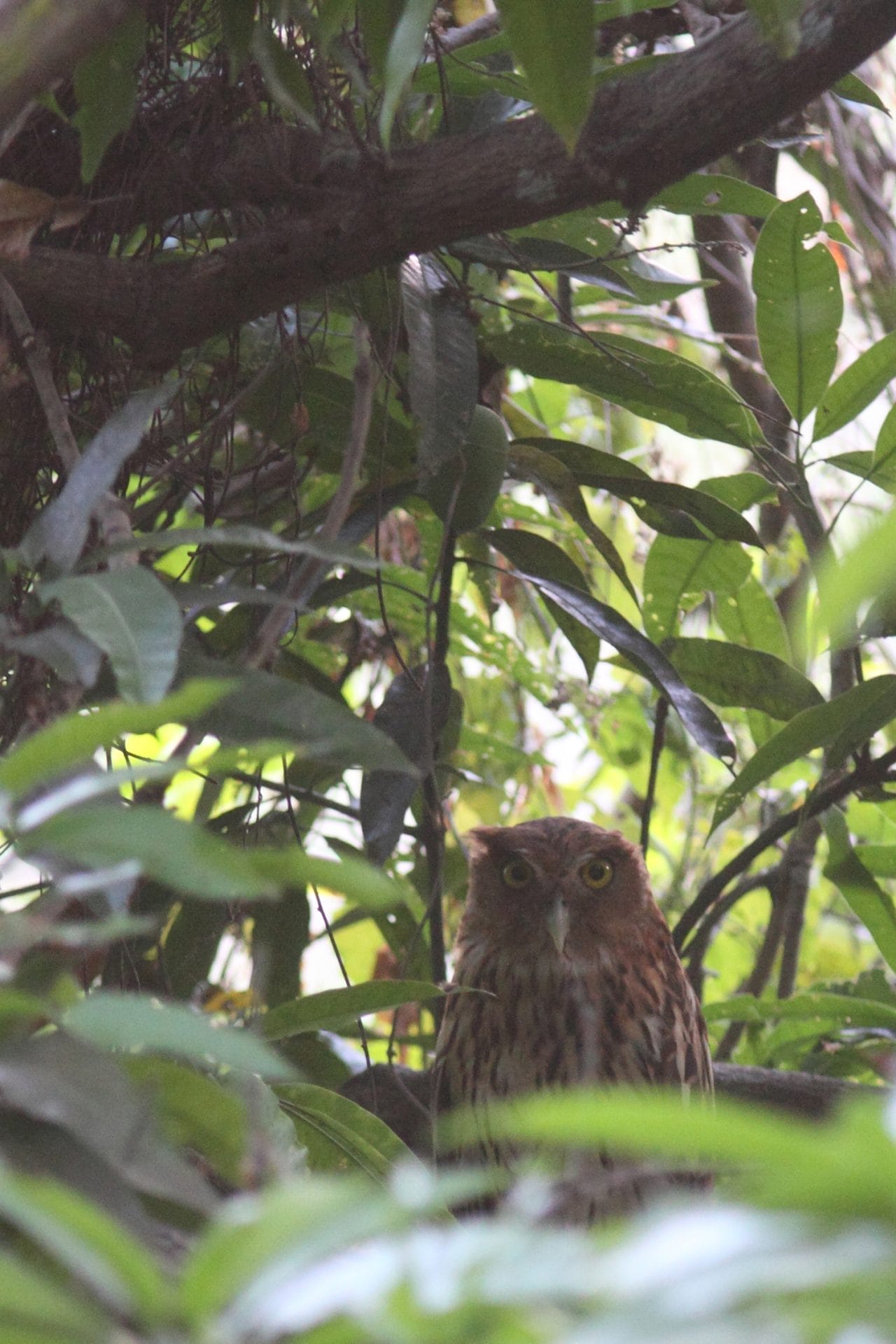
At dusk, the owl flew from the day roost site to a large open tree and there landed beside a second eagle-owl with a subtly different colouration. As I maneuvered into position for a better view, I determined that the second owl was probably the fledgling, based on the exaggerated head bobbing behavior.
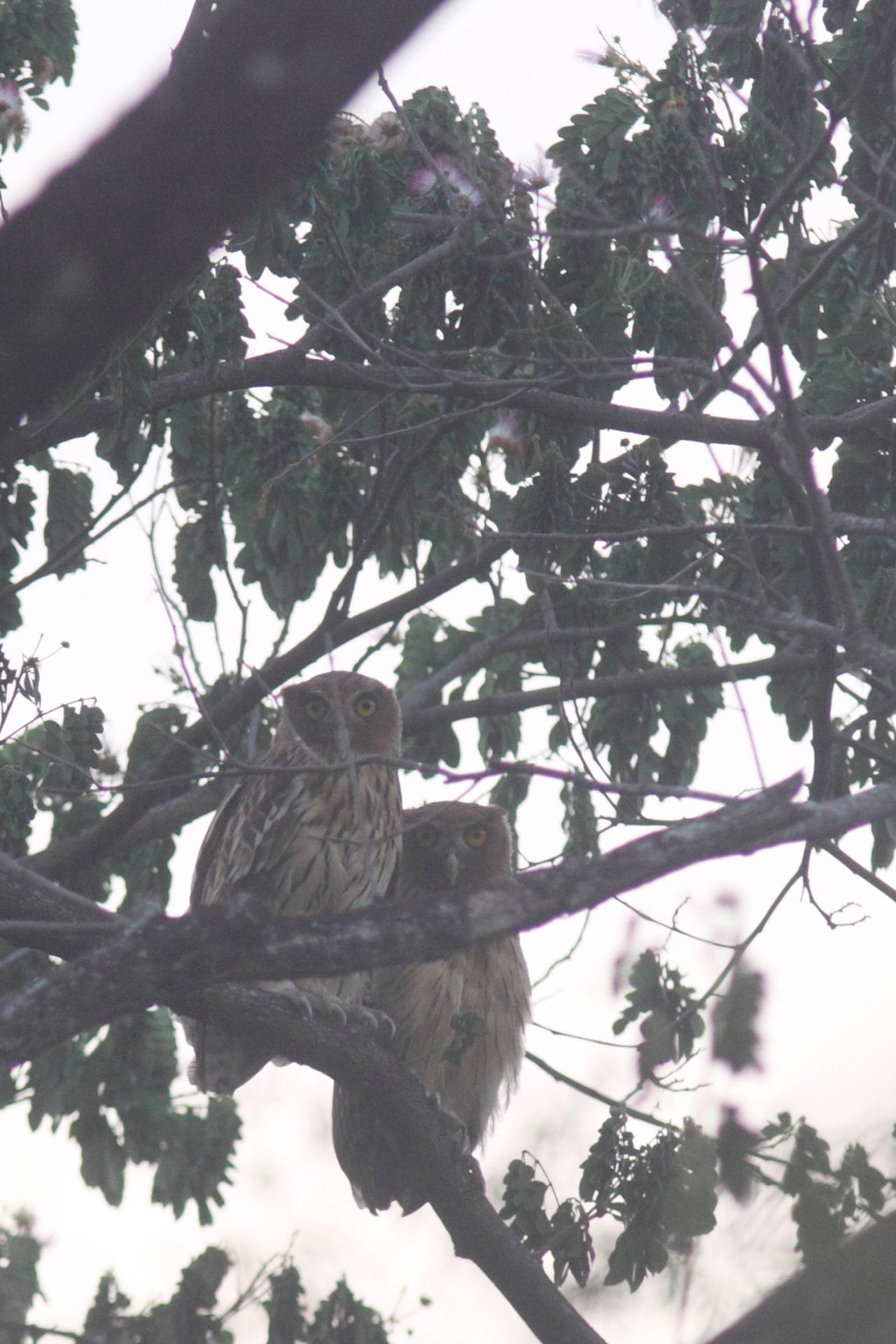
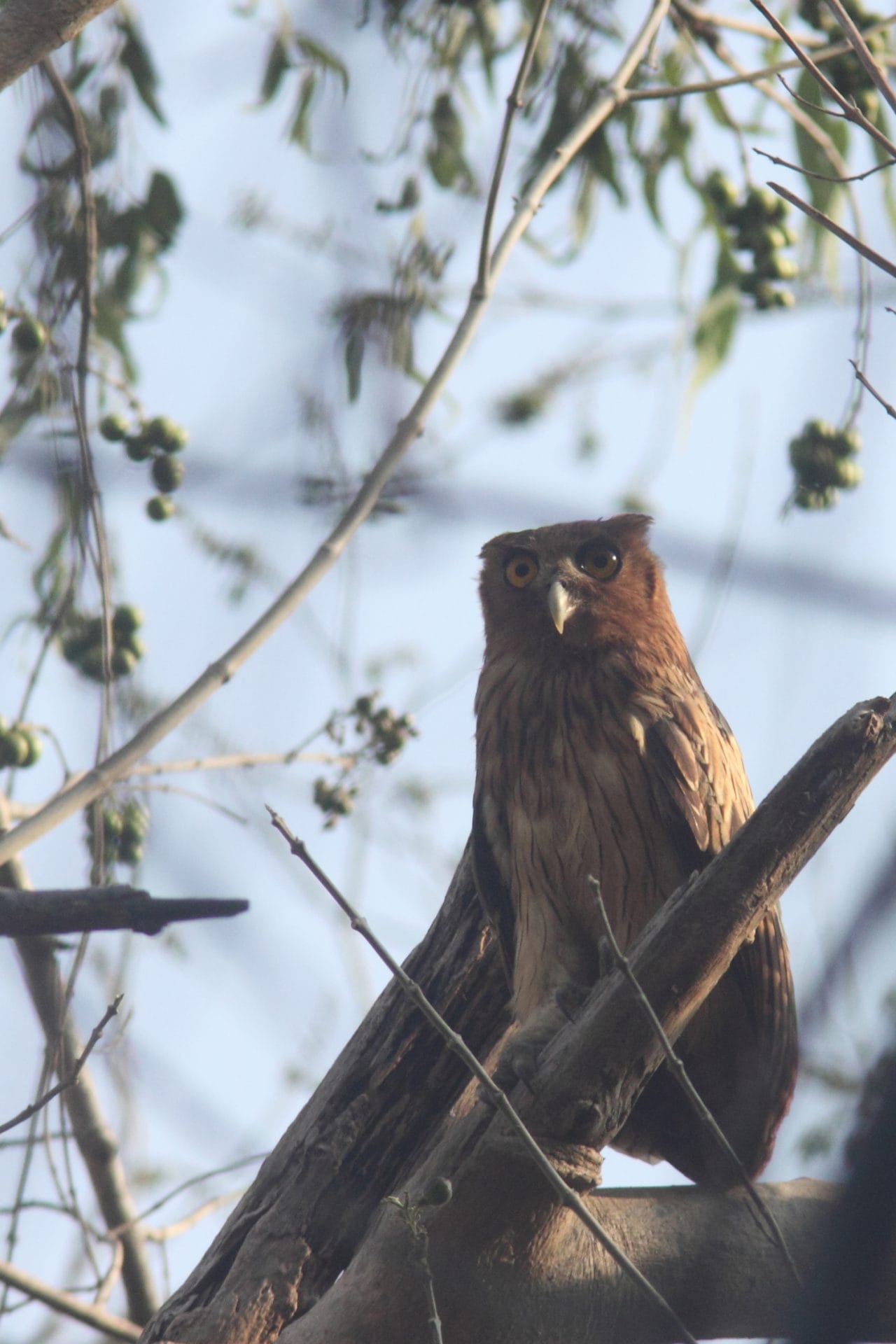
As I watched them, a Luzon Lowland Scops-Owl began calling. I was torn because I also wanted to photograph the scops-owl but I decided to sit still and watch the eagle-owls for as long as I could. By the time the eagle-owls had disappeared into the night, the scops-owl was silent. I continued owling and found a Philippine Frogmouth on a low perch, brief looks at a hawk owl, an Asian Palm Civet, and I even flushed a tiny crake from the wet grass near the edge of the golf course (brief and tantalising views suggested Ballion’s but I was unable to get photos).
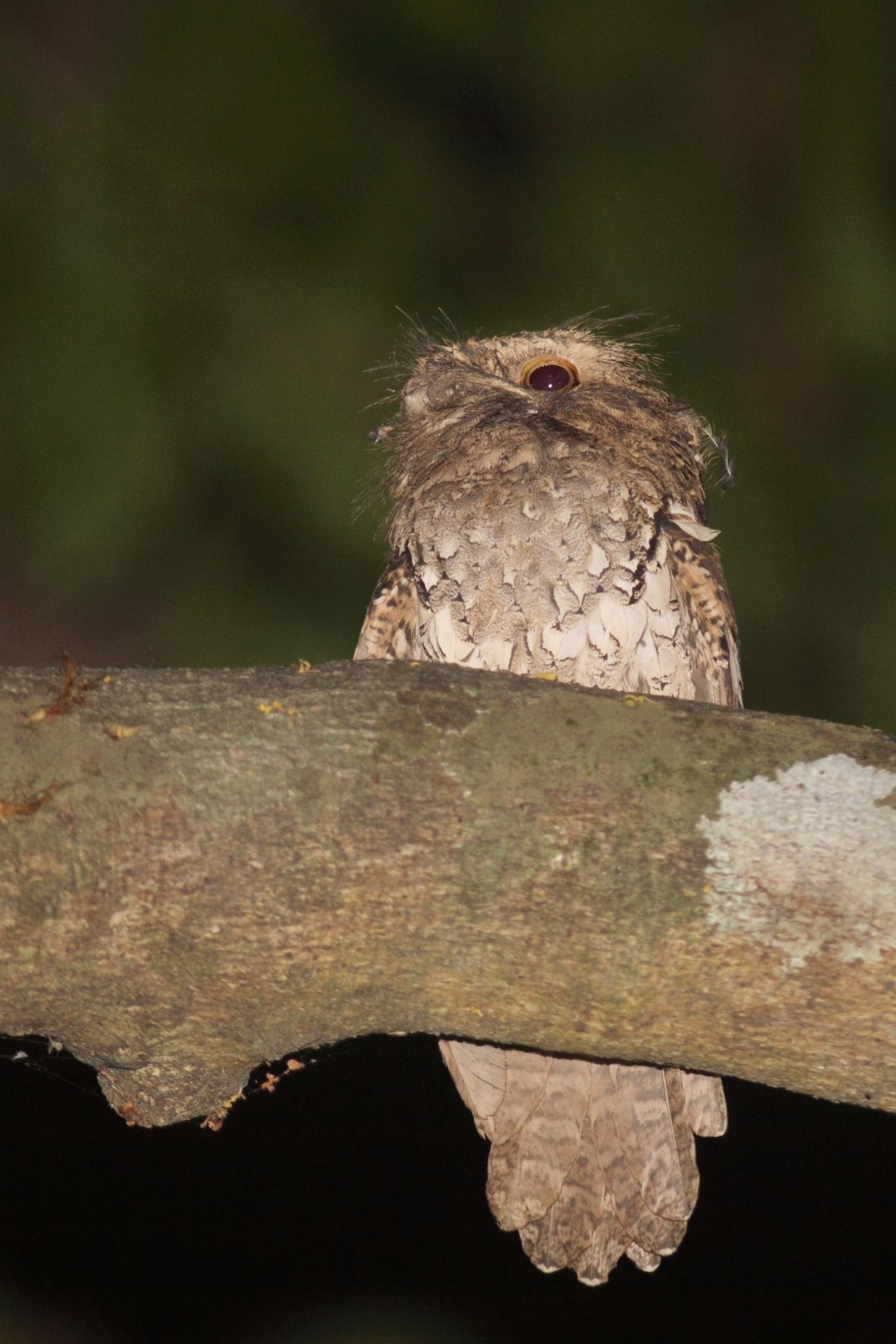
I also saw one of the adult eagle-owls hunting and took a few night time photos. I have a flashlight with a stand that I use for solo owling which enabled me to get some action shots. I can shine the beam on the branch the owl is perched on or bounce it off vegetation (rather than directly on the owl itself) so that I have enough light focus. I also try to bounce the flash whenever possible and underexpose the flash by two thirds or a full stop. I limit the amount of time I shine the beam in the direction of the owl to no more than 2 – 3 minutes as well (as with the frogmouth photo shown here). These measures minimise the risk of disturbing the owl. The available evidence suggests that owl eyes function much like human eyes – the flashlight won’t cause any permanent damage; however, the eye requires time to adjust to changes in light if flashlight use is prolonged, just as human eyes do. Unlike human eyes however, some evidence suggests that in owls the pupil’s response to light are independent in each eye (this also can be seen in one of my frogmouth photos). The constant spotlight beam needs to be even more restricted in use than the camera flash because it can cause “temporary blindness” after usage while the eyes adjust to the darkness again. Photographing owls obviously requires a lot of caution and good judgment and the hardest thing is often turning off the light.
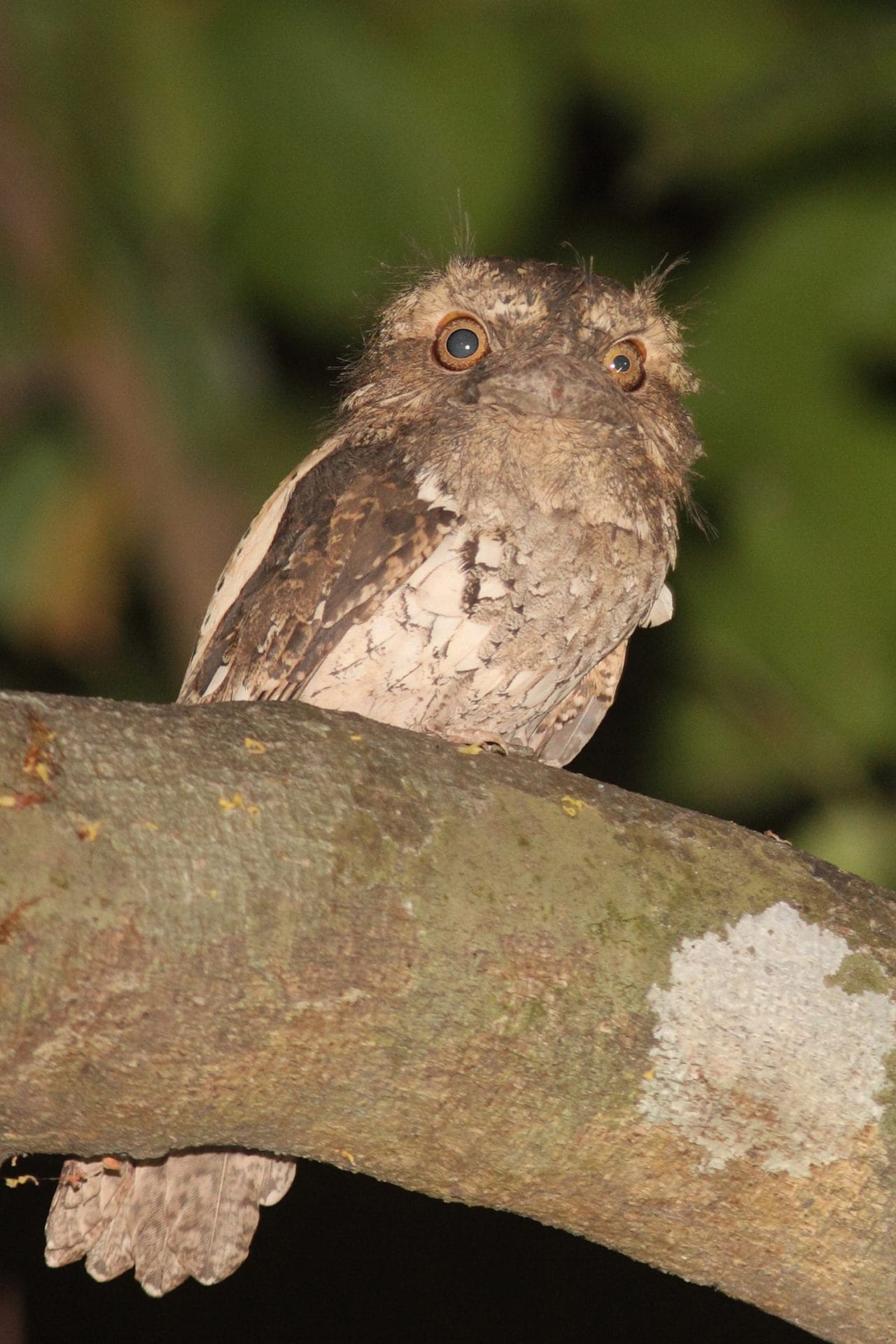
All of this certainly made for an unforgettable evening. I managed to sleep on one of the benches for an hour or so and got up an hour before dawn. I was able to locate the eagle-owls again and followed them to a day roost where I took a few more photos. I was very excited to see this magnificent creature so well, my 126th species of owl seen!
